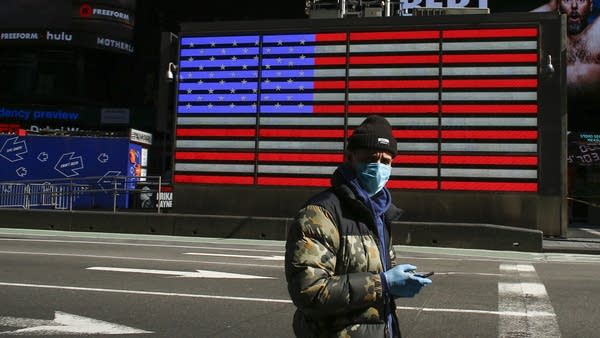Grocers are scrambling to face another pandemic panic
And they can’t rely on their usual algorithms to decide what to stock up on.

Remember the early days of the pandemic? Back when panic buying meant it was nearly impossible to find things like toilet paper, rice and flour? Well, public health officials are warning that we could see a second wave of the virus before the end of the year. And this time retailers want to be prepared if there’s high demand for certain products.
But that’s thrown all the computer models they usually use out of whack. Machine learning helps run stores like Walmart and Kroger, and that’s not as useful during a pandemic.
When you pick up orange juice or granola bars at the grocery store, you are being watched. Video cameras and even retinal scanners are looking at where your eyes go, how long you linger and what you touch.
“If it can be measured through technology and money can be made, and of course it’s legal and ethical, it will happen,” said Eric Bradlow, who teaches retail analytics at Wharton. He said algorithms use all that data to decide how much to order and what the sticker price should be. And that works in normal times.
“Now the question is: How predictive is that model going to be?” Bradlow said.
Not so predictive. Because a data model is only as good as its data, and computers don’t know how to factor in people’s unusual buying patterns during the pandemic. Rudi Leuschner, a professor of supply chain management at Rutgers, said retailers are going old-school.
“We use the supercomputer that everybody has built in right as they’re born, which is human intuition,” Leuschner said.
People’s shopping habits have ebbed and flowed depending on the state of COVID-19 cases or lockdowns. Computers can’t make sense of this stuff, so retailers have to trust their own guts.
“It is definitely going to come down to a lot of calculated best guesses,” said Julie Niederhoff, who teaches supply chain management at Syracuse University.
She said humans tend to overcorrect. Retailers may actually stock up too much, wasting money and warehouse space. Plus, who knows what people will panic buy the second time around.







